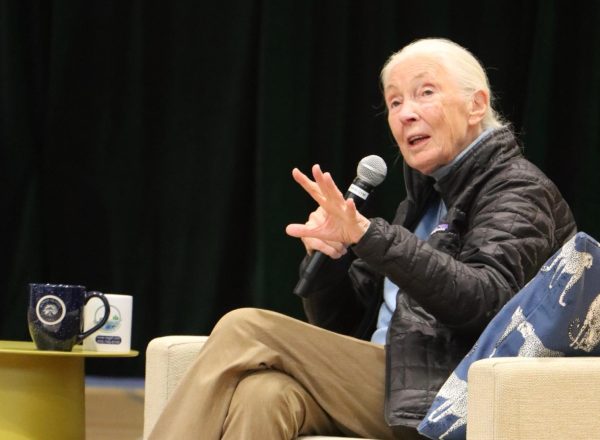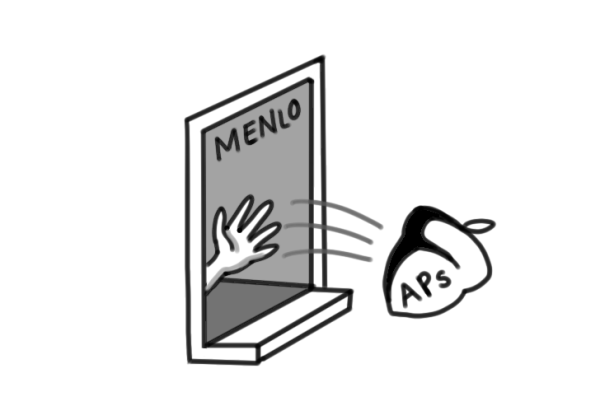Menlo Students Disagree About Separating Art from its Artist
March 7, 2019
Music is of great importance to many students in the Menlo community, as it is for many teenagers. But, what happens if a popular artist commits a crime, is arrested or generally has a bad reputation? Do students consider the artist and their actions at all when buying or listening to their music?
As someone who enjoys rap music, senior Nate Solomon has never stopped listening to an artist’s music based on their reputation. “I think you have to separate the art from the artist, so I [don’t] think I’d stop listening to someone’s music, but, for example, I wouldn’t [pay] to go to a Chris Brown concert,” Solomon said. Brown has been accused of assaulting women, including singer Rihanna, for years. Solomon finds a difference between simply enjoying someone’s music, art or writing due to the artistic value it holds, rather than paying for a concert that would support the artist directly.
“There’s lots of debate in the hip-hop community on whether if someone is [criminally tried] for doing something [wrong], do we ignore them or do we just enjoy their music?” Solomon said. “I think that you have to look at how drastic[ally] you want to change your opinion of the artist. That has to be a judgement call based on what the person did [and] whether it’s been proven, but I think you should do something if there’s something [bad] going on in the background [of the artist’s life].”
Senior Samy Castaneda stopped listening to Brown after the media covered the stories of the domestic abuse against him. “I don’t want to support and give money to someone who has [assaulted women],” Castaneda explained.
Senior Marianne Siulangapo defines not supporting an artist as not buying their music, not just the act of stopping listening to their music. “Of course [Brown’s] songs are going to be on the radio because they’re so popular, but I think for the most part [we should] just [remember] that no matter what, [he did what he did],” Siulangapo said.
Senior Leighton Shiveley finds it important to highlight the boundary of compartmentalizing the artist from their music or anyone from their art because she believes people can still appreciate it. “If the message behind a song is domestic abuse, then I’m not going to be like, ‘Yes, I support this message,’ but if it’s a story and it’s explaining a serious issue in a way that you can think about it [on a] deeper [level], I think that it’s fine to listen to it,” Shiveley explained.
Senior Sam Untrecht believes that every artist has a story, and the way each artist portrays their artwork is unique. “I think it’s important that you understand who you’re listening to and what they’re trying to tell you rather than just listening to the music [alone],” Untrecht said.
Senior Max Dostart-Meers feels that artists are potentially among the most troubled people in society because most of the time, they hold the most outcasted opinions. “They have the most interesting things to say, the most interesting perspective[s] to [share], because they have so much difficulty within their own lives, so I don’t think it’s a coincidence that sometimes the people who make the most interesting art are the most problematic,” Dostart-Meers said. “I think their story is important, whether it’s the story we wish wasn’t there, or the story that makes us sympathize with them [the most].”
For some students, like senior Ruby Rodriguez, it is quite simple to separate the art from the artist. “Using Chris Brown as an example: he’s so popular that it’s kind of hard to get away from him, so people are just like, ‘Whatever, if I just ignore all the bad stuff that he’s done and just listen to the music, then it’s not morally weighing on me in a sense,’” Rodriguez said.














Griffin Thomas • Mar 13, 2019 at 4:53 pm
You’ve seen the news and documentaries. You know R. Kelly allegedly peed on a 14 year old girl. You know XXXTENTACION beat his girlfriend and that 6ix 9ine used a child in a sexual performance. But did you know that 2Pac allegedly raped a woman? What about Elvis Presley, who had 14 year old girls wear white panties for him in bed? John Lennon confessed to beating his wife and kids. Michael Jackson allegedly touched little boys. As listeners of these “problematic artists,” should we continue to listen to their music despite all of the crimes they’ve committed? Yes, because when making a decision to listen to a great song, we look for the art, not the artist.
But we can’t let these crimes go unpunished. We can’t simply say “oh your music is amazing, so you get a free pass on that whole beating your wife thing.”
These artists should be penalized for their actions, such as prison sentences or community service because they deter the person from doing the events again. Actions like boycotting these artists and their music don’t work. Boycotting does very little to change an artist’s behavior let alone their financial situation, if that’s your concern. Spotify and other music streaming platforms rip off artists so you listening to R. Kelly’s music is not making him richer. The artist might not have even written “their” song. You’d be depriving the producer, label, and songwriter of all the credit they deserve for an amazing project. We can only punish these people by holding them accountable for their actions. We can’t punish their music.
Or we could just listen to someone else. But here’s the thing, that “someone else” was probably influenced by the artist you wish to boycott. By these standards you wouldn’t be “ethically allowed” to listen to hip hop, R&B, rock, pop, and other forms of music. You can’t avoid the influence of these artists because of their profound impact on the music industry. You would never have an the Weeknd or HER without R. Kelly. These artists forged these artforms. It’s impossible to avoid them completely.
Also, by boycotting music, you are depriving yourself of the cultural significance of the art and no longer be practicing cultural empathy. R&B was called race music before its name changed and you want to boycott its most influential pieces of music? You must empathize with the culture and themes within the music to be a more aware member of society. Art is a window into the human condition, and this music is no exception. These songs are ringtones for the emotions we feel and troubles we face. We’d be doing art a disservice by only acknowledging the artist and not the cultural importance and significance of the music.
Art is not worse because of who made it. It is meant to be enjoyed. J.D Salinger abused his wife and married women much younger than himself. Does that mean we should burn our copies of Catcher in the Rye and never teach it again? No, because there is so much more to art than just the artist. If you do not feel good while listening to a song, don’t listen to it. Otherwise, you are free to enjoy the Ignition remix and Billie Jean at your leisure. As Eminem says, “Lose yourself in the music.”